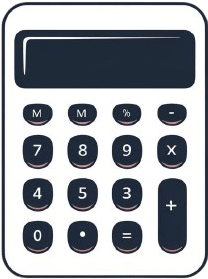Amortization Calculator
| Year | Interest | Principal | Ending Balance |
|---|
| Month | Payment | Principal | Interest | Balance |
|---|
Loan amortization is the systematic process of paying off debt through regular payments over time, where each payment covers both interest and a portion of the principal balance. Understanding amortization is crucial when making significant financial decisions like purchasing a home, car, or other big-ticket items. The amortization calculator at the top of this page allows you to visualize exactly how your payments will be distributed between principal and interest throughout the life of your loan. Whether you’re considering a 30-year mortgage, a 5-year auto loan, or a personal loan for home improvements, knowing how amortization works can help you make smarter borrowing decisions and potentially save thousands of dollars in interest.
How Loan Amortization Works
Amortization spreads your loan repayment into equal periodic payments including principal and interest. At the beginning of your loan term, a larger portion of each payment goes toward interest, while a smaller amount reduces the principal. As you continue making payments, this ratio gradually shifts, with more money going toward the principal and less toward interest.
Take Maria, for example. She borrowed $25,000 for a new SUV with a 5-year term at 4.5% interest. Her monthly payment is $466.08, but in her first payment, only $362.75 reduces the principal, while $103.33 pays interest. By her final year, almost all of each payment (over $460) goes toward principal, with just a few dollars covering interest. This happens because interest is calculated based on the remaining balance, which decreases with each payment.
Types of Loans That Use Amortization
Mortgages (15-year vs. 30-year comparisons)
Mortgages are perhaps the most common amortized loans. James and Leila were deciding between a 15-year and 30-year mortgage on their $300,000 home purchase. With the 30-year option at 4%, their monthly payment would be $1,432, but they’d pay $215,609 in total interest. The 15-year option at 3.5% meant higher monthly payments of $2,144 but only $86,037 in total interest—saving them nearly $130,000 over the life of the loan.
Auto loans (typical 3-7 year terms)
Auto loans typically range from 3 to 7 years. Alex financed a $22,000 car over 5 years at 3.9%, resulting in monthly payments of $404.98. If he had extended to a 7-year term, his monthly payment would drop to $305.87, but he’d pay an additional $1,293 in interest over the life of the loan.
Personal loans and home equity loans
These loans are commonly used for debt consolidation or home improvements. Sofia used a $15,000 personal loan at 8% over 3 years to renovate her kitchen. Her monthly payment of $470.24 allowed her to complete her project while knowing exactly how much she’d pay each month until the loan was satisfied.
Student loans
Student loans often have longer amortization periods. Marcus graduated with $40,000 in student loan debt at 5.5% interest. With a standard 10-year repayment plan, his monthly payment is $434.11, with total interest paid reaching $12,094 over the decade.
Key Factors That Affect Your Loan Payments
Interest rates and how they impact monthly payments
Even small differences in interest rates can significantly affect your total cost. When Carlos was shopping for a $250,000 mortgage, he found that improving his credit score lowered his rate from 4.5% to 3.75%. This 0.75% difference reduced his monthly payment by $110 and saved him over $39,000 in interest over 30 years.
Loan term length and the trade-offs between shorter vs. longer terms
Shorter loan terms mean higher monthly payments but less total interest. When Priya was financing her $18,000 home theater system, she compared a 3-year term ($541 monthly) to a 5-year term ($338 monthly). While the 5-year option freed up monthly cash flow, it would cost her an additional $1,280 in interest over the life of the loan.
Down payment size and its effect on financing costs
Larger down payments reduce your loan amount and can affect interest rates. David and Emma put 20% down on their $350,000 home purchase instead of the minimum 5%. This eliminated the need for private mortgage insurance (saving $150 monthly) but also reduced their loan amount by $52,500, saving them over $30,000 in interest over the loan term.
Credit score’s influence on interest rates and loan terms
Your credit score directly impacts the interest rate you’ll be offered. When Jasmine improved her credit score from 680 to 740 before purchasing a $30,000 SUV, her auto loan rate dropped from 6.5% to 3.9%. This saved her $1,971 in interest over the 5-year loan term.
How to Read an Amortization Schedule
Explanation of payment schedules (monthly vs. annual views)
An amortization schedule shows every payment throughout the life of your loan. Monthly schedules provide detailed insights for budgeting, while annual schedules give you a broader overview of your progress. Robert uses his mortgage’s annual schedule to plan major home improvements based on his equity growth while checking the monthly schedule to track his exact progress after making extra payments.
Understanding the balance, interest, and principal columns
The balance column shows your remaining loan amount after each payment. The interest column shows how much your payment goes toward interest, while the principal column shows how much reduces your loan balance. When Lisa reviewed her car loan amortization schedule, she was surprised that only $95 of her first $350 payment went toward reducing her principal, motivating her to make additional payments.
How to track your equity build-up over time
Equity is the portion of the asset you own, calculated as the asset’s value minus the loan balance. Thomas tracked his home equity growth through his amortization schedule. He discovered that after 7 years of payments on his 30-year mortgage, he had built enough equity (over 20%) to remove his private mortgage insurance, saving him $167 monthly.
Identifying the tipping point where principal exceeds interest
There’s a moment in every amortized loan where the principal portion of your payment finally exceeds the interest portion. For Gloria’s 30-year $400,000 mortgage at 4%, this tipping point came during year 18. Understanding this helped her make strategic decisions about refinancing or making extra payments to reach this milestone sooner.
Strategies to Pay Off Loans Faster
Making extra principal payments
Even small additional payments can significantly reduce your loan term and interest paid. Michael added just $100 extra to his monthly $1,200 mortgage payment, specifically toward the principal. This simple strategy will shave 4 years off his 30-year mortgage and save him over $42,000 in interest.
Bi-weekly payment strategies
Making half your monthly payment every two weeks results in 26 half-payments yearly (equivalent to 13 monthly payments). When Olivia switched her $1,400 monthly mortgage payment to $700 bi-weekly payments, she reduced her 30-year mortgage by 4.5 years and saved $27,000 in interest.
Refinancing options when they make sense
Refinancing can be powerful when interest rates drop significantly. After rates fell 2%, Patrick refinanced his remaining $220,000 mortgage balance from 6% to 4%. While there were $3,000 in closing costs, his monthly payment dropped by $300, and he’ll save over $41,000 in interest despite resetting to a new 30-year term.
Lump-sum payment considerations after windfalls
Applying lump sums directly to the principal can dramatically affect your loan. When Sarah received a $20,000 inheritance in year 5 of her 30-year $300,000 mortgage at 4%, she applied it directly to her principal. This single move cut 3.5 years off her mortgage and saved her over $34,000 in interest payments.
Real-World Examples: Amortization in Action
Home mortgage scenario with calculations
The Johnsons purchased a $450,000 home with 20% down, financing $360,000 at 3.75% for 30 years. Their monthly payment is $1,667, and they’ll pay a total of $240,233 in interest over the life of the loan. If they make one extra payment each year, they’ll pay off their mortgage 4 years early and save approximately $42,000 in interest.
Car loan example with different down payment amounts
Kevin was purchasing a $35,000 car and compared financing options. With a 10% down payment ($3,500), his 5-year loan at 4.5% would require monthly payments of $590 and cost $3,873 in total interest. Increasing his down payment to 20% ($7,000) reduced his monthly payment to $524 and his total interest to $3,443, saving him $430 over the loan term.
Personal loan comparison with varied interest rates
Aisha needed a $12,000 personal loan for home repairs. She compared offers: a 3-year loan at 10% would cost $387 monthly with $1,931 in total interest, while another lender offered 7% for the same term, reducing her payment to $371 and total interest to $1,338. By shopping around for the lower rate, she saved $593 over three years.
Impact of credit score improvements on loan costs
Before applying for a $250,000 mortgage, Daniel spent six months improving his credit score from 640 to 720. This improvement reduced his offered interest rate from 5.5% to 4.25%. The difference saved him $190 monthly on his payment and will save him approximately $68,000 in interest over the 30-year term.
Tax Implications of Different Loan Types
Mortgage interest deduction basics
Homeowners can often deduct mortgage interest on their taxes, making the effective cost lower than the stated interest rate. Jennifer and Mike pay $12,000 in mortgage interest annually on their new home. Being in the 24% tax bracket, this deduction saves them approximately $2,880 in taxes yearly, effectively reducing their interest rate by about 0.7%.
Business loan interest considerations
Business owners can typically deduct loan interest as a business expense. When Trevor borrowed $75,000 for his growing landscaping business at a 6% interest rate, the entire interest amount was tax-deductible. This reduced his effective interest rate to approximately 4.5%, assuming a 25% tax bracket.
Student loan interest deductions
Even if you don’t itemize deductions, you may be able to deduct up to $2,500 in student loan interest annually. Rachel pays about $2,200 in student loan interest yearly. Being in the 22% tax bracket, this deduction saves her approximately $484 in taxes annually, making her effective interest rate about 1% lower than the stated rate.
Record-keeping tips for tax time
Maintaining detailed records of loan interest paid is crucial for tax purposes. Nathan created a simple spreadsheet that logs his mortgage statements throughout the year. When tax season arrives, he has all information readily available, saving him hours of searching for documents and ensuring he claims his full eligible deduction of $9,600 in mortgage interest.
Common Amortization Mistakes to Avoid
Focusing only on the monthly payment amount
Many borrowers make the mistake of focusing solely on whether they can afford the monthly payment. When Melissa was car shopping, she almost opted for a 7-year auto loan to keep her payments under $300. After reviewing the amortization schedule, she realized this would cost her an additional $3,200 in interest compared to a 5-year term, prompting her to adjust her budget for the shorter term.
Ignoring the total interest paid over the life of the loan
The sticker shock of total interest can be eye-opening. Chris was considering a 30-year, $400,000 mortgage at 4.5%. When he saw that he’d pay $329,627 in interest—nearly 82% of the original loan amount—he opted instead for a 20-year term. His monthly payment increased by $436, but he’ll save $157,219 in interest over the loan’s life.
Misunderstanding how extra payments affect the loan term
Many borrowers don’t realize how powerful extra payments can be. Lauren decided to pay an extra $200 monthly toward her $180,000 mortgage principal. She was surprised to learn this would shorten her 30-year mortgage to just 21 years and save her over $58,000 in interest, despite a relatively small additional payment.
Overlooking prepayment penalties
Some loans include penalties for paying them off early. Victor was excited to use his bonus to make a large payment on his mortgage, only to discover it had a prepayment penalty of 2% of the prepaid amount. He adjusted his strategy to stay under the annual prepayment limit of 20% of the original loan amount which wouldn’t trigger the penalty.
Conclusion
Understanding loan amortization is a powerful financial tool that can help you make more informed borrowing decisions and save thousands in interest costs. Using the amortization calculator at the top of this page, you can visualize how your payments will be distributed over the life of your loan and explore strategies like making extra payments or choosing different loan terms. Whether financing a home, vehicle, education, or other major purchase, knowing how amortization works allows you to take control of your debt instead of letting it control you. Take time to run different scenarios through the calculator, considering how various down payments, interest rates, or loan terms might impact your financial future.
FAQs About Loan Amortization
What happens if I make extra payments?
Extra payments reduce your principal balance directly, meaning less interest accrues on future payments. This can significantly shorten your loan term and reduce the total interest paid. For example, adding just $100 extra to a $1,500 monthly mortgage payment could shave 3-5 years off a 30-year mortgage term.
How do variable interest rates affect amortization?
With variable-rate loans, your amortization schedule will change when rates adjust. If rates increase, more of your payment may go toward interest, potentially extending the time needed to repay the loan. Conversely, when rates decrease, more goes to the principal, potentially shortening the loan term if you maintain the same payment amount.
Can I get an amortization schedule from my lender?
Yes, most lenders provide amortization schedules upon request. Many online banking portals also offer tools to view your current loan amortization. Requesting a schedule can help you verify that your payments are being applied correctly and understand exactly how much principal you’re paying down with each payment.
What’s the difference between amortization and simple interest?
Amortized loans calculate interest based on the remaining principal balance, which decreases over time. Simple interest loans calculate interest on the initial principal for the entire loan term, regardless of how much you’ve paid down. Amortized loans are much more common for mortgages, auto loans, and personal loans, while simple interest is often used for short-term loans.
How do I know if a loan is amortized?
Most installment loans with equal periodic payments are amortized. If you make the same monthly payment toward a loan that will eventually be paid off completely (like a mortgage or car loan), it’s likely amortized. Credit cards and lines of credit typically are not amortized, as payments vary based on the current balance and minimum payment requirements.








Leave a Reply